The silver arowana Osteoglossum bicirrhosum is a bonytongue fish found in black and whitewater habitats in many waterway basins of South America (except most of the Rio Negro). It is one of two species in the genus, both found in South America and occasionally overlapping in range. The species name comes from the two narrow barbels or cirrhi protruding from its lower jaw. These fish are effective predators, feeding on a wide variety of prey although fish and invertebrates are their preferred food. Silver arowana are also called ‘water monkey’ as they are capable of leaping clear out of the water to reach prey on overhanging branches.

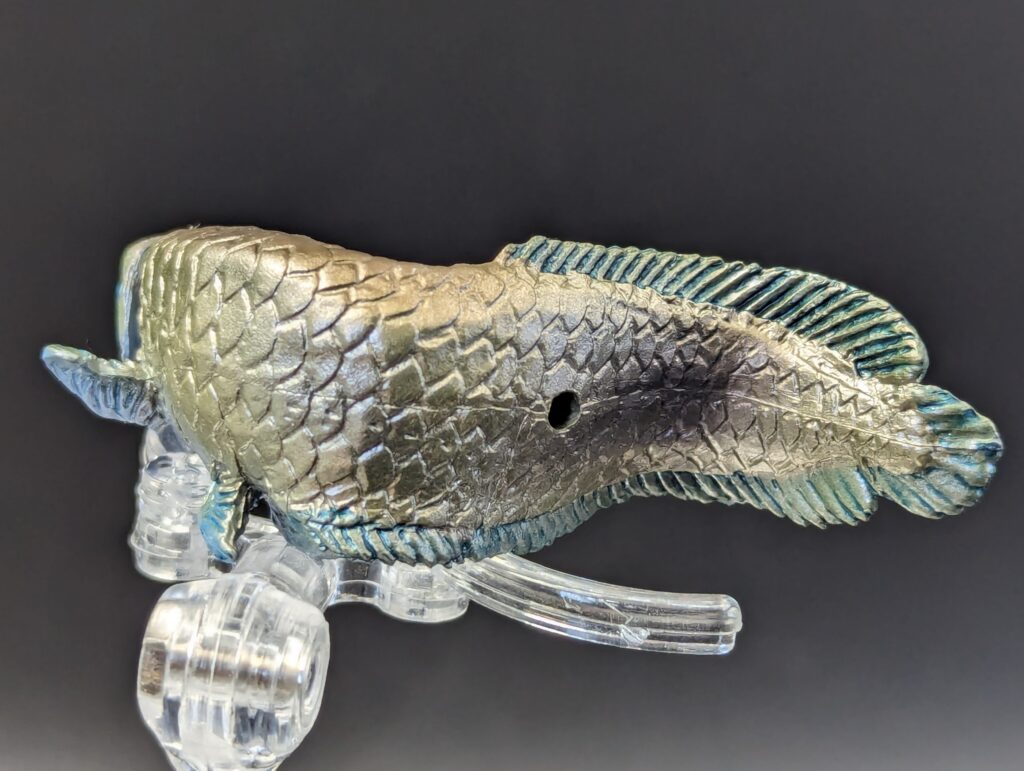
They are relatively large fish, usually under 1 metre in length, but individuals around 1.2m are known. Adults are silvery with very large scales across the entire body. The body is long and laterally compressed, with a large, upturned mouth and large eyes on the large head, and a tapered tail. The fish are reasonably popular in the aquarium trade (I’ve kept them myself) and are also food fish in their native range. They are listed as Least Concern by the IUCN. The similar black arowana is very similar in appearance as adults, although the young are distinctly coloured.
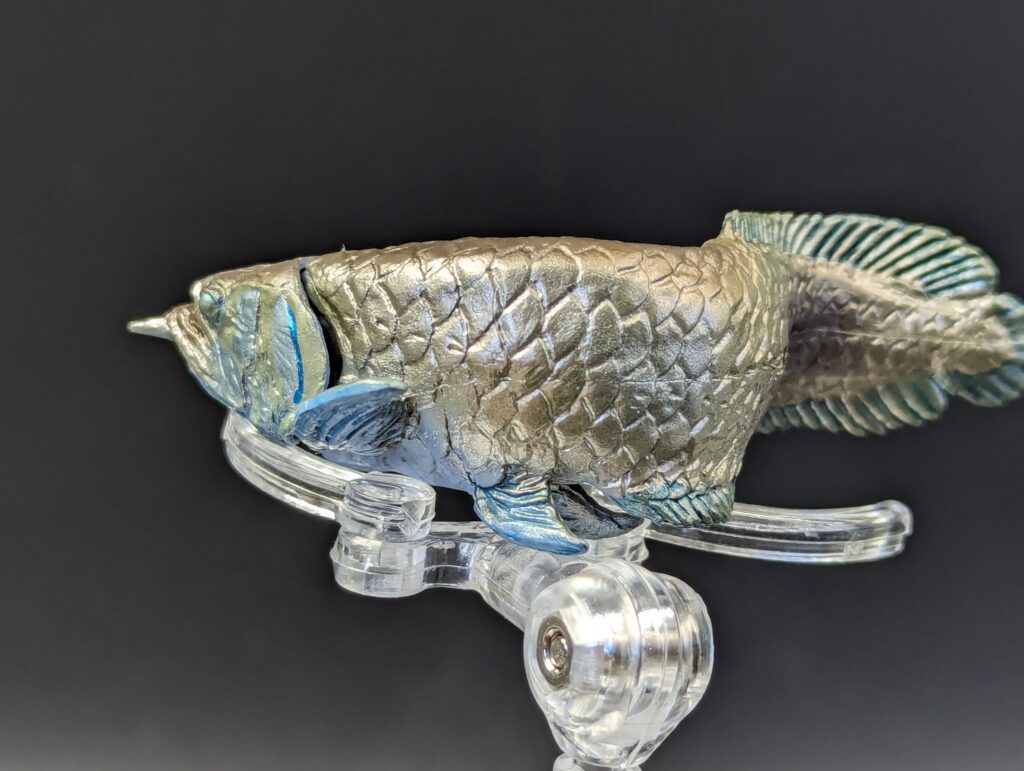
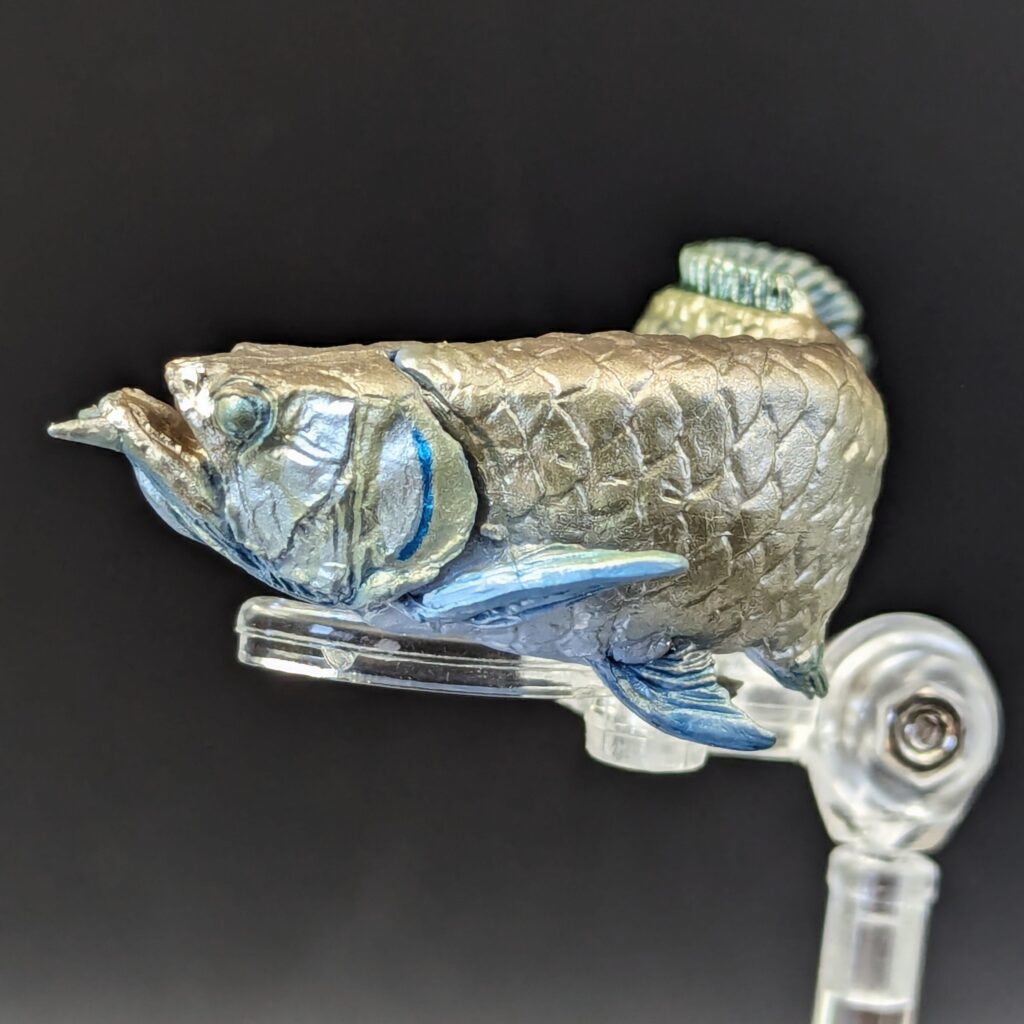
This model is another of the 5 figures released recently (Fall 2023) from Bandai, the Ancient Fish Series 2 collection. As with the previous saddled bichir the series features fish that are generally recognized as being ‘ancient’, fish with a deep geologic history. The silver arowana represents a member of the Osteoglossiformes or ‘bony-tongues’, so named for their characteristic hard or toothed tongues. As a group fossils are first known from the order from the late Jurassic. Currently, the order includes a wide range of modern fish, including several types of fish that have never been made as figures like featherfin knifefish, goldeyes, freshwater butterflyfish, the aba-aba, elephantfish (other than an accessory with the aforementioned bichir); and most popularly familiar as figures and in general as arapaima and arowana. That said, silver arowana are relatively uncommon as figures compared to arapaima or their Asian relative.

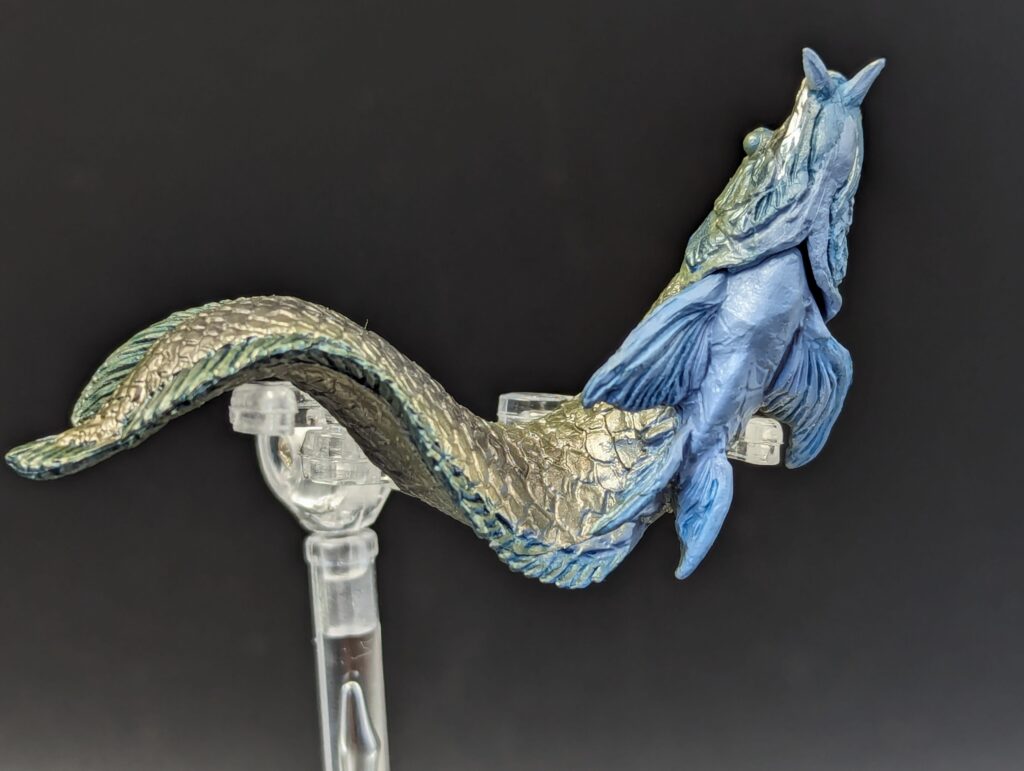
This particular figure is sculpted in a curved, leaping pose, about 10.5cm long along that curve, giving a scale of about 1:10. It is overall silvery-grey in colour, with a bronze metallic wash over the large, deeply-sculpted scales. The body shape is appropriately laterally compressed, tapering from the large, deep face to the very small caudal fin. The dorsal and anal fin are appropriate long and low along the back and belly, respectively. Both terminate with a gap before the small, rounded caudal fin.
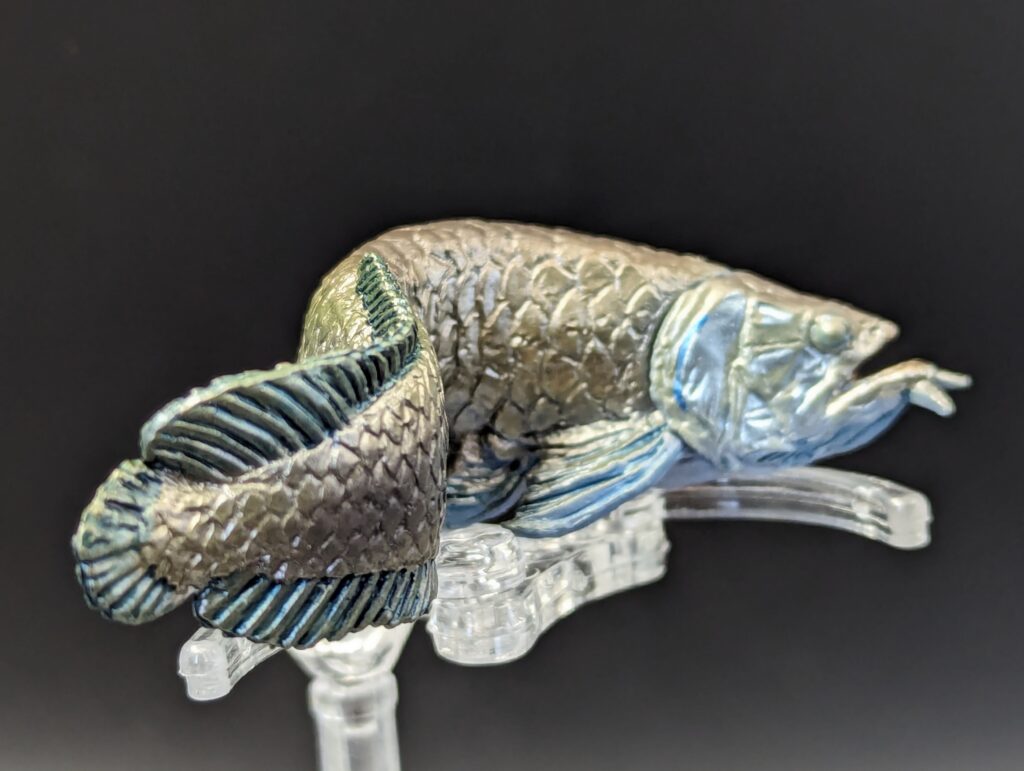
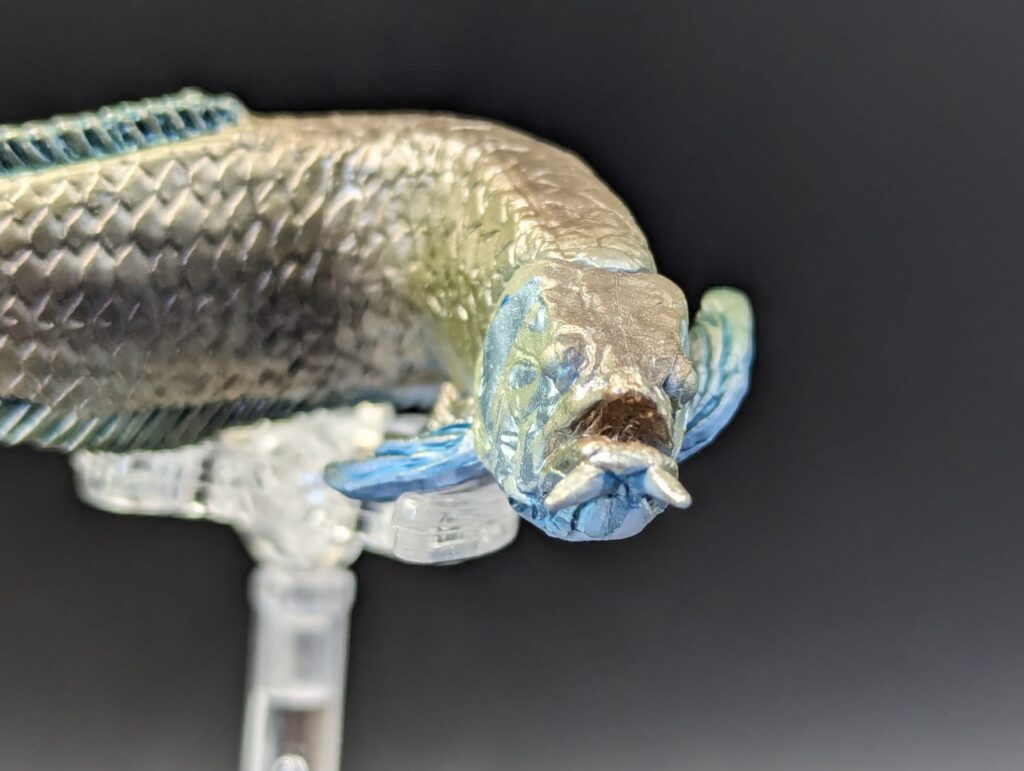
The dorsal fin originates about midway down the back, the anal fin originates about 1/3 from the front of the body. In front of those, the two pelvic fins are sculpted, and the pectoral fins are sculpted protruding out from the body, behind the opercula. The opercula, all fins, bottom of the mouth, and cheeks are painted with a blue metallic wash. The belly between the opercula and pelvic fins is painted light blue. The face has large sculpted grooves, and the mouth is slightly open. The two cirrhi are clearly sculpted outward from the front of the bottom jaw. The eyes are large and bulbous, also picked out in a metallic bluish-silver.
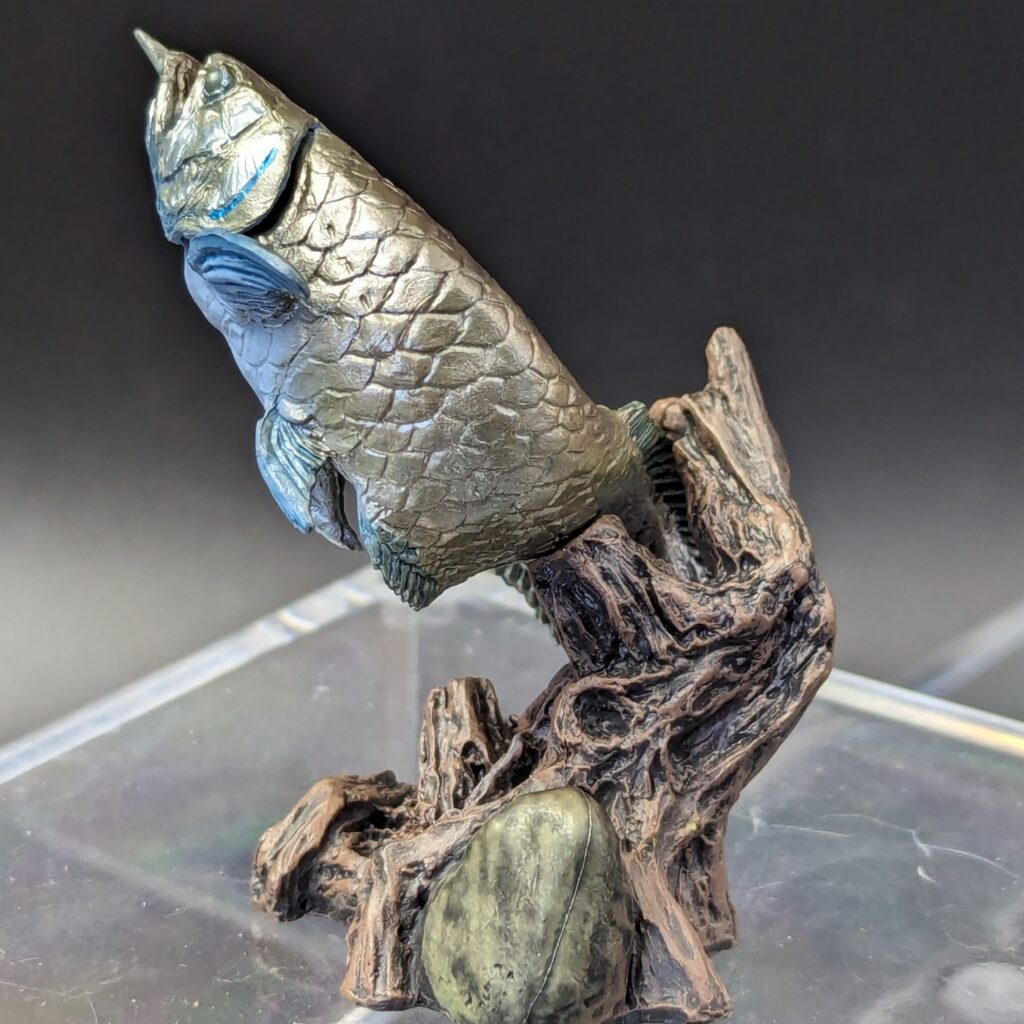
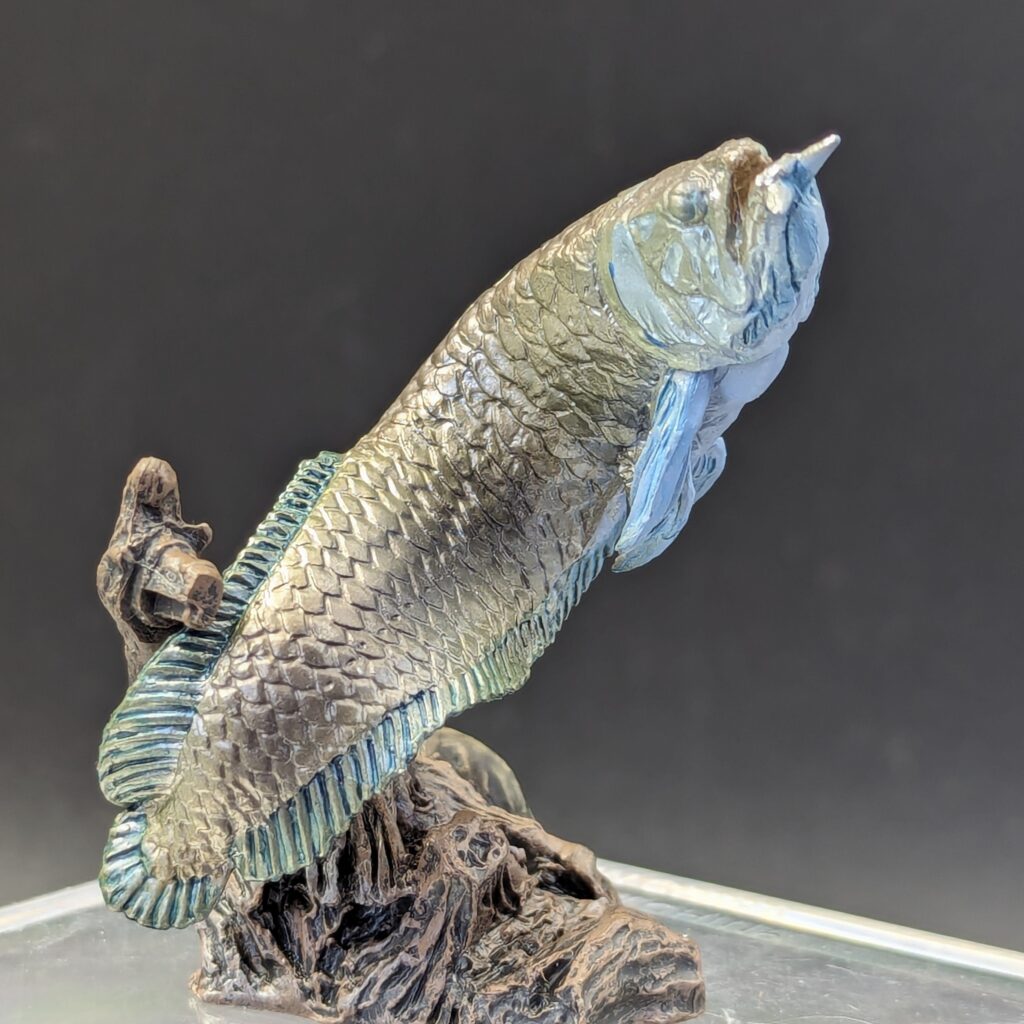
Overall, the sculpt is a great representation of a silver arowana, and the colouring is fairly accurate save the eyes which would usually have a distinct dark pupil. The model comes with a large submerged tree-stump that when fully assembled contains a small extra animal, an insect I am told is the ‘elephant beetle’, Megasoma elephas. The way the peg and fish shape are oriented, the model is oriented is a mostly vertical pose. I think it is meant to evoke a silver arowana leaping for its prey, although the waterline doesn’t quite work; that or the beetle is underwater (but I don’t think they do that).
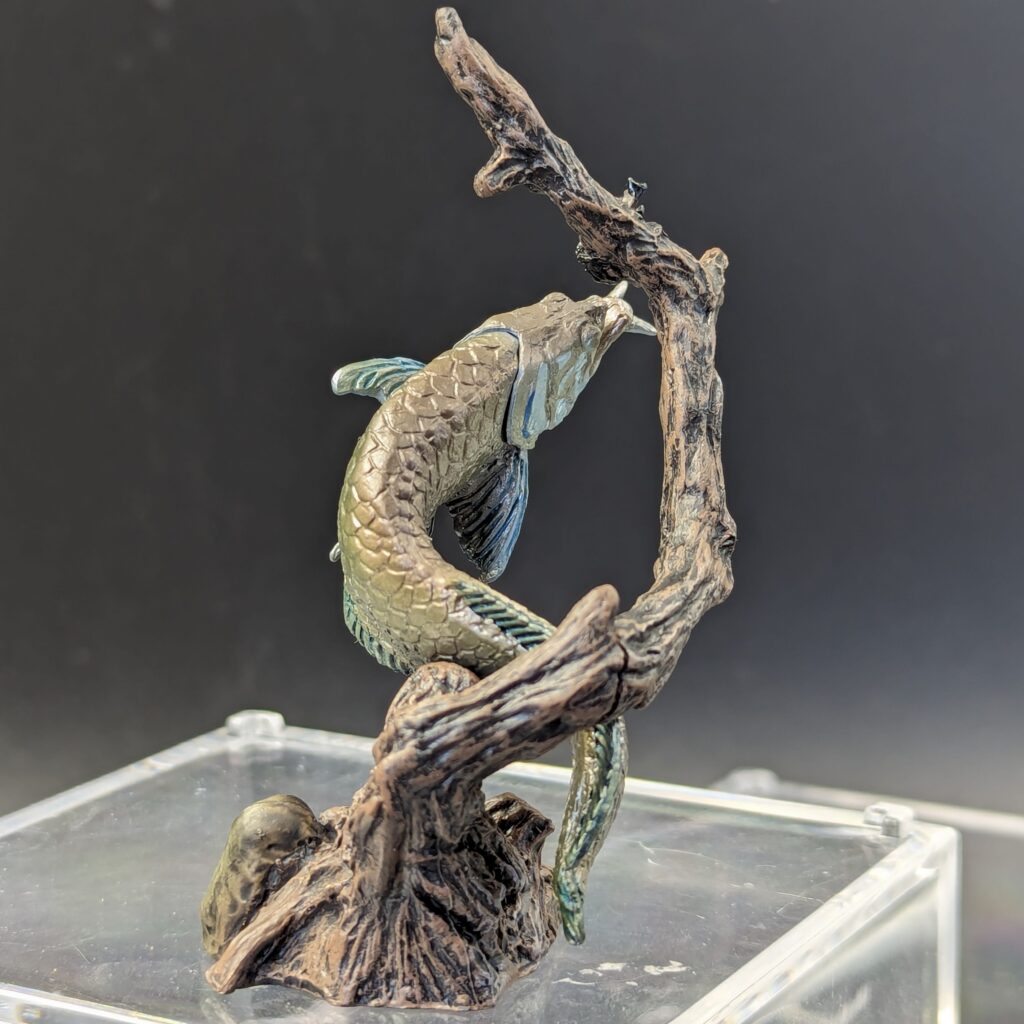

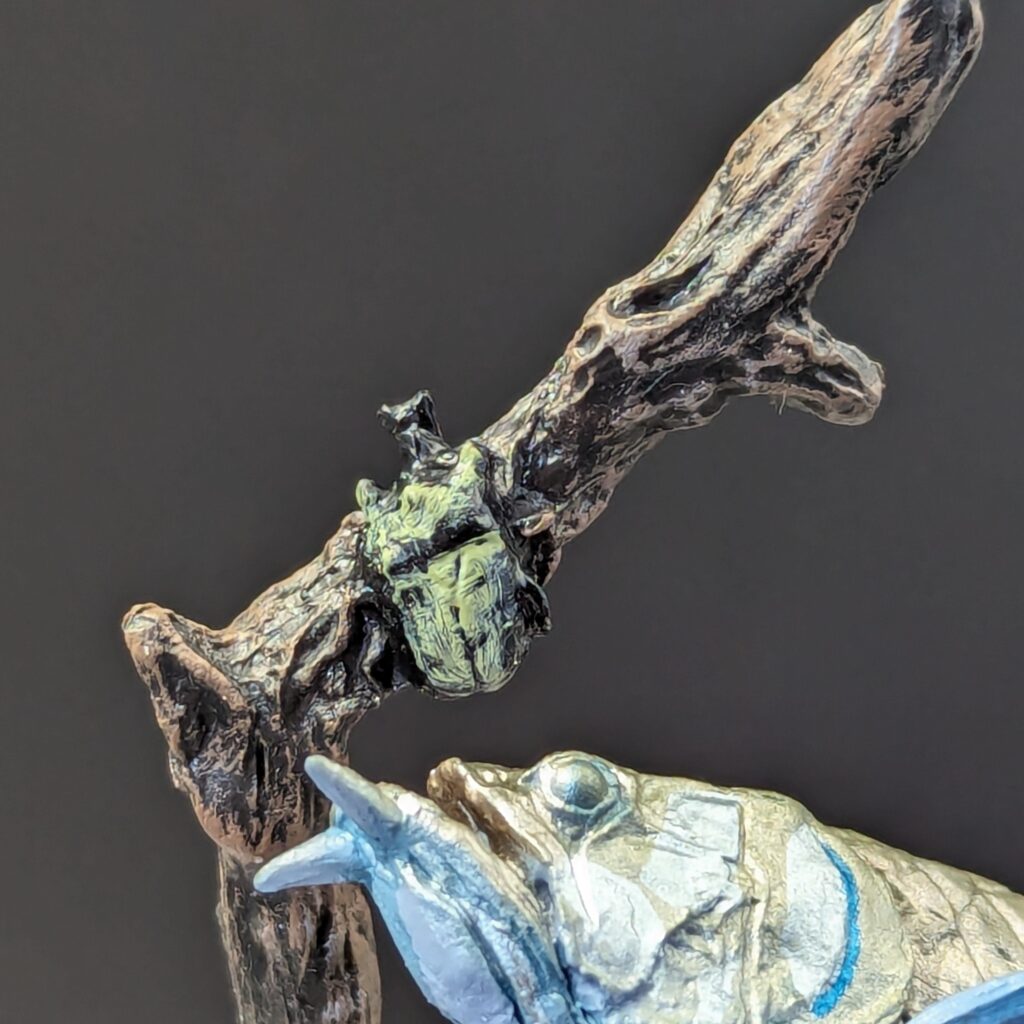
Overall, the figure is quite active looking, something that is common in these Bandai sets. The dark wash is a little bit much, they’re usually far more silvery, with at best blue iridescence. The finnage would also have blue highlights, but again, the figure has it more thickly applied. Overall, though, it is a good figure of a popular fish that is not normally produced (I believe there are a couple Kaiyodo Aqualand models, both of which are rare and expensive, and a large model from Favorite. Although the figure isn’t perfect it would definitely be a great figure in any collection (I would certainly recommend the whole set).
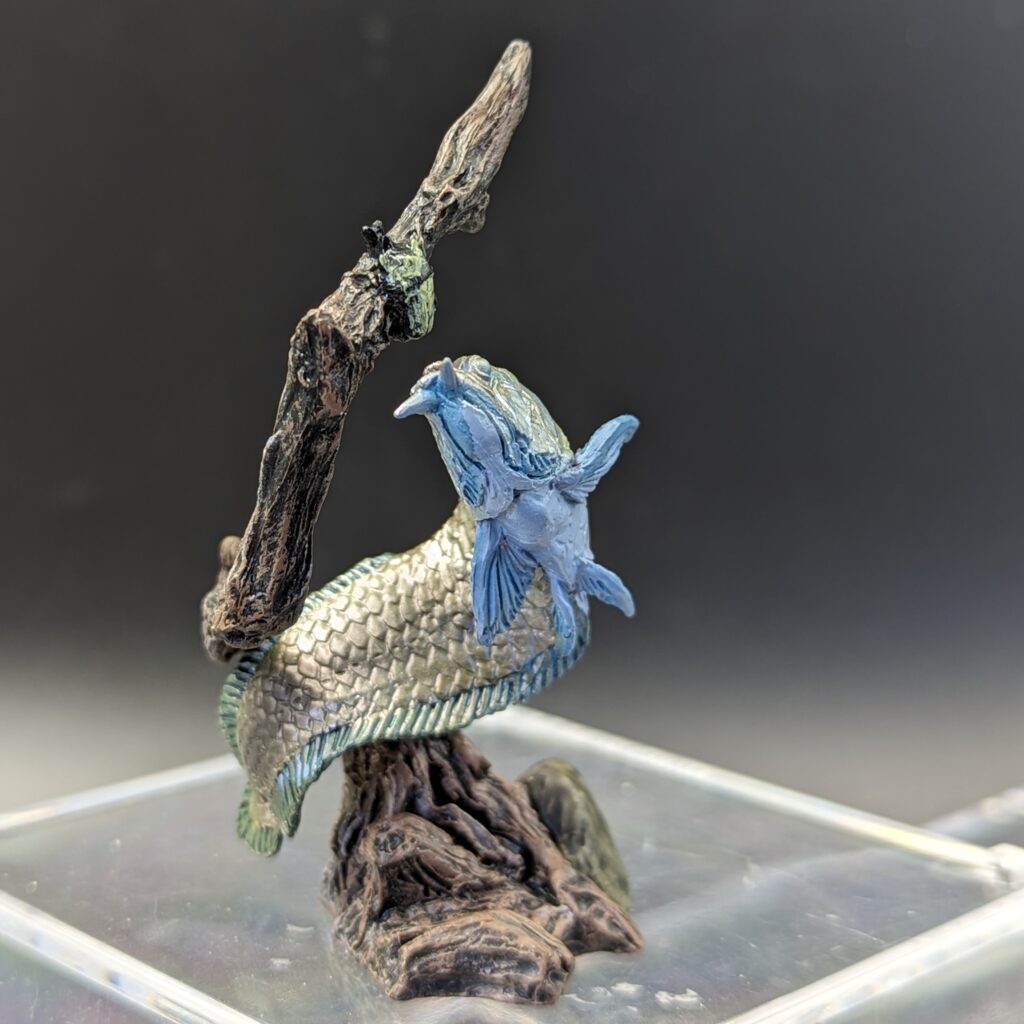
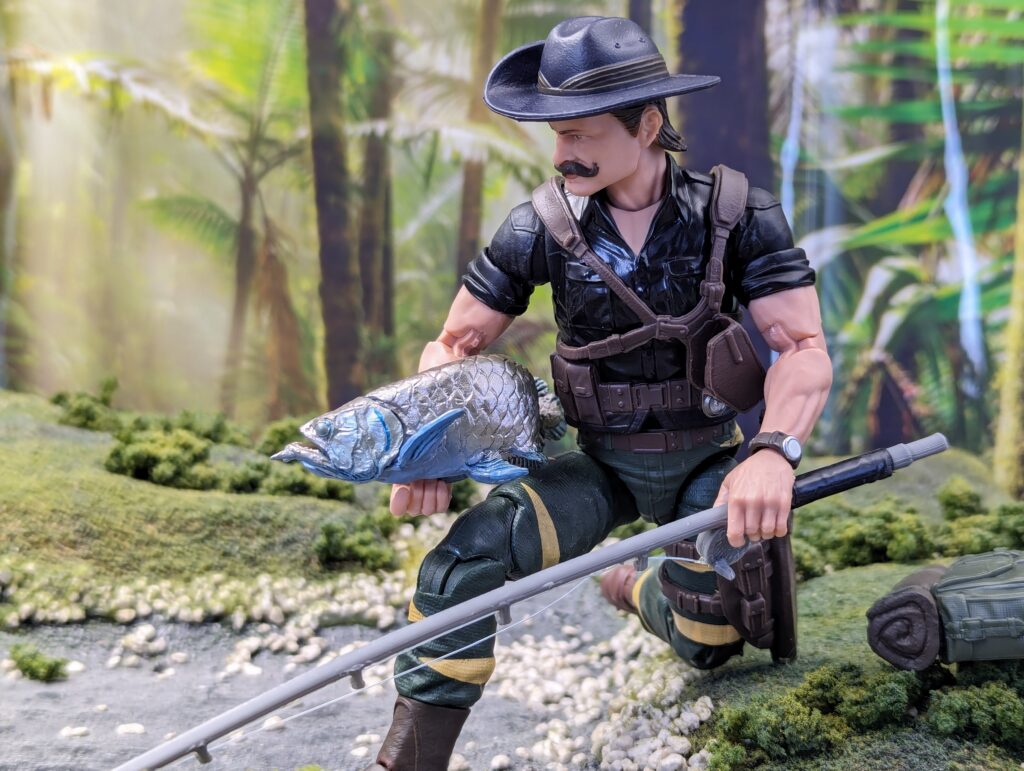
Disclaimer: links to Ebay and Amazon on the AnimalToyBlog are affiliate links, so we make a small commission if you use them. Thanks for supporting us!



